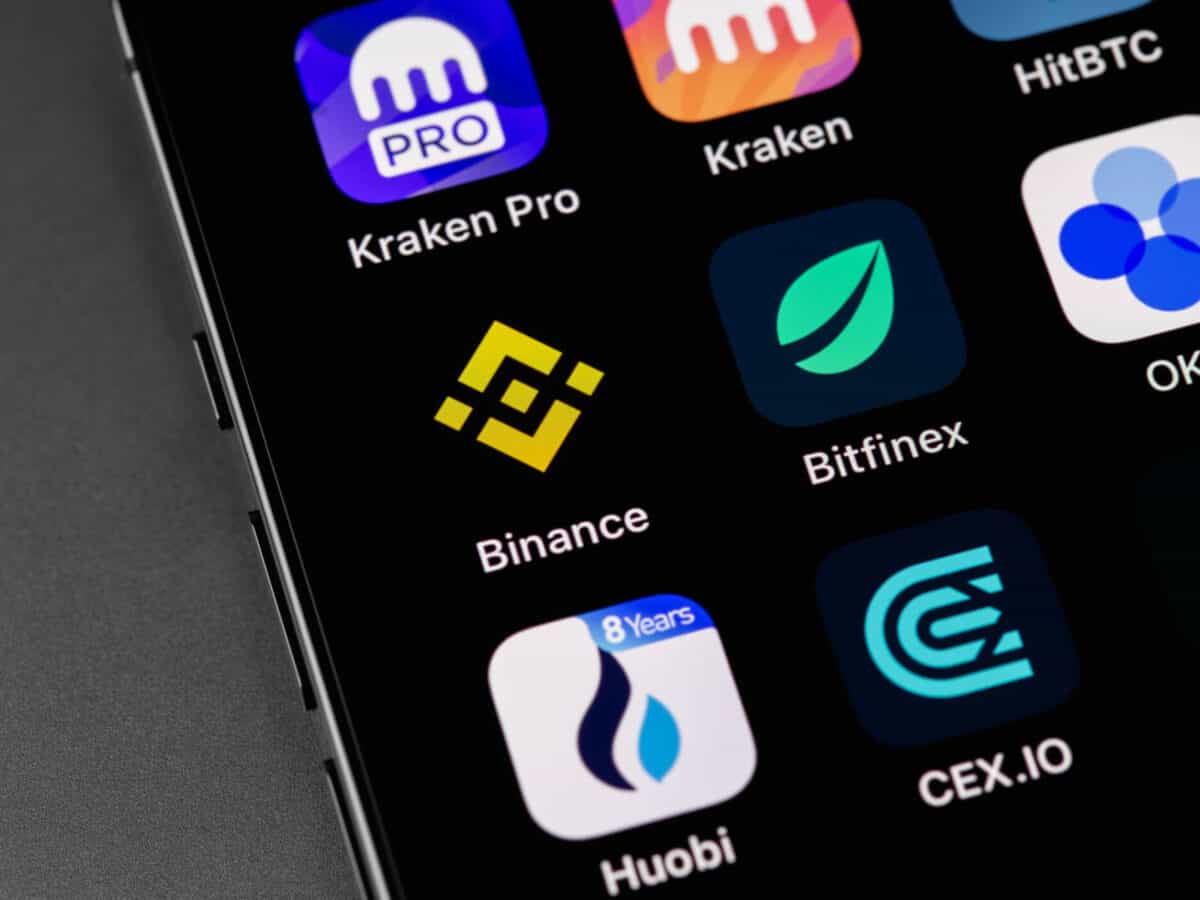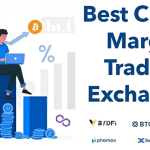Crypto Exchanges Reviews by Security: How do you know if your digital investments are truly safeguarded? Your hard-earned money deserves the best protection available, and I’m here to cut through the jargon and show you the real score on exchange security. From the necessity of two-factor authentication and KYC protocols to analyzing past breaches, I’ll guide you through what makes an exchange resilient. I’ve compared top exchanges’ safety protocols, delved into the significance of regulation and insurance, and examined advanced security measures that impact your user experience. Let’s dive in and discover which platforms make the grade for keeping your investments secure.
Evaluating Exchange Security and User Safety
Assessing Two-factor Authentication and KYC Compliance Measures
Do you ever feel scared your crypto might get stolen? You’re not alone. With hacking incidents on the rise, it’s vital to know how safe your exchange is. This starts with two essentials: two-factor authentication (2FA) and Know Your Customer (KYC) checks.
What is two-factor authentication on exchanges?
2FA is a lock with two keys. It keeps your account safe. Even if someone gets your password, they still need your second key. Most times, this second key could be a code from your phone. This makes breaking into your account really tough.
Why is KYC compliance important in crypto trading?
KYC means the exchange knows who you are. It stops bad guys from using the platform for shady stuff. You provide ID and sometimes a selfie. It can be a hassle, but it keeps everyone’s money safer.
How do these measures affect your trading experience?
Well, they might slow things down a bit. But think of it like wearing a seatbelt. It’s there to protect you. Ensuring exchange security evaluation is robust can be a lifesaver. Your peace of mind is worth it.
Reviewing Historical Security Breach Incidents
Have there been big hacking incidents on crypto exchanges?
Yes, and they’re scary. Some exchanges have lost millions to hackers. But these events teach us lessons. They show us what security breach history of exchanges to avoid.
What should you look for in an exchange’s past security incidents?
Search for how the exchange responded. Did they pay back lost money? Did they boost their security after? Answers to these let you compare the safety ratings for digital asset exchanges with more insight.
How do these breaches shape an exchange’s current security measures?
They serve as wake-up calls. Exchanges often upgrade their safety measures big time after a breach. This includes better encryption standards for exchange wallets and tighter control over who can access funds.
Remember, the goal is to keep your hard-earned crypto safe. Whether it’s looking into the multi-sig technology on crypto platforms or reviewing crypto exchange audit reports, every bit matters. Your choices should be informed and careful.
Because at the end of the day, you want to trade without worry. And a secure exchange should provide just that – a sense of safety as you navigate the highs and lows of the crypto market.
Comparing Safety Protocols Across Top Crypto Exchanges
Exchange Security Evaluation Techniques
When you put money into crypto, you want it to stay safe. So let’s dive into how we keep it locked down tight. First up, exchange security evaluation. This is big. It’s about testing each part to make sure hackers can’t get in. We do this in many ways. One big one is checking how the exchanges handle your login. They should have some steps before letting anyone in. This is called two-factor authentication. It’s like having a secret handshake that only you and the exchange know.
Then there’s a deep look at a bunch of rules and checks called KYC compliance. KYC stands for Know Your Customer. This means the exchange really makes sure it knows who’s using it. They ask for some ID and stuff to make sure it’s really you.
Some exchanges even put your crypto in a kind of digital vault, far away from any web-trouble. This is called cold storage. Others use fancy locks that need more than one key. This is called multi-signature technology, or multi-sig for short.
Best Practices for Cold Storage and Multi-sig Technology
Cold storage keeps your digital coins offline. This way, even if hackers break into the exchange, they can’t get your stuff because it’s not there. It’s like keeping your jewels in a safe at the bottom of the ocean. But how can we tell if an exchange uses cold storage right? They should say it out loud and clear. They should also have checkups from security pros. These pros try to break in just to show the exchange where they need better locks.
Let’s talk multi-sig. It’s like needing a few different keys to open one big lock. It’s a way for an exchange to make extra sure it’s really you asking to move your crypto. Think of it like needing both the pilot and co-pilot to start the plane.
So, when looking at exchanges, we look at their rules for keeping your crypto safe and sound. It’s like comparing lifeguards to see who’s the best at saving swimmers. And remember, always swim where there’s a lifeguard. In crypto, that means pick the exchange with the toughest security. Happy trading!
The Role of Regulation and Insurance in Exchange Security
Exploring Regulatory Compliance and Its Impact on Trader Safety
When you pick a crypto exchange, think about the rules it follows. Just like a seatbelt in a car. It’s there to keep you safe. Secure cryptocurrency platforms review rules all the time. They do this to protect your money. Safety ratings for digital asset exchanges depend a lot on this.
Rules and checks are called regulatory compliance. Crypto exchanges must follow these to run right. They check who you are – that’s KYC, or “Know Your Customer”. They also use tough-to-break codes to keep wallets safe. This is important because rules help stop bad things like money theft or fraud.
Traders care a lot about these rules. It makes them feel safe to trade. User reviews on exchange security often say how rules make a difference. Trust in a platform grows when it shows it follows strict rules.
Insurance Policies and Their Role in Protecting User Assets
Now let’s talk about what if something goes wrong, like a hack. Insurance is a big deal here. Just like with a car, it helps to fix things if there’s a crash. Insurance policies of crypto exchanges work the same. They help get your money back if it’s stolen.
Many top crypto exchanges buy big insurance to cover losses from hacking. This insurance helps a lot. It can cover many coins that might get lost in a hack. So when you put your money into crypto, check if there’s insurance. It can really save you if there’s trouble.
Cold storage means keeping crypto offline. Just like keeping cash in a safe and not in your wallet. It’s super safe because hackers can’t get to it. Multi-sig is like having many keys for one lock. It means more than one person must say yes to move the coins. These are some of the best ways to keep crypto safe.
Looking at how exchanges use cold storage and multi-sig can show how safe they are. When comparing safety of top crypto exchanges, see who uses these the best. The more they do, the safer your coins are.
So, checking rules and insurance is a smart move. It’s just like wearing pads in sports. It’s there to help keep you safe while you have fun trading crypto!
Advanced Security Measures and User Experience
Incorporating SSL/TLS Encryption and Phishing Protection
When you log into a crypto exchange, you want to know you’re safe. SSL/TLS encryption is your first guard. It keeps your data safe as it moves from your computer to the exchange’s servers. Think of it as a secret code that only you and the exchange understand.
But encryption is just the start. Exchanges also fight phishing. Phishing tricks you into giving away your password. Good exchanges have tools to spot these fake sites. They warn you before you click on anything shady.
Phishing protection means you can trade without fear. You know the site you’re on is the real deal. Not a fake copy that wants to steal from you.
What about when you’re not trading? Should you worry? Not so much. Exchanges use cold storage for your coins. This means they keep them offline, away from hackers. If it’s not online, thieves can’t reach it. It’s like putting your cash in a safe, not a wallet.
Here’s a crucial tip—always look for two-factor authentication (2FA). It’s a must for security. With 2FA, a thief needs more than your password. They need a special code that changes every time. Even if they know your password, they can’t get in without this code.
User Reviews and Trust Scores: A Measure of Exchange Reliability
How do you choose the safest exchange? Check what other users say. User reviews give you a real look at how secure an exchange is. They’ve been there. They’ve traded. They know the quirks and the care of the platform.
Trust scores are another guide. They add up all the pieces—user reviews, how long the exchange has been around, and if they’ve had security issues. A high trust score is a green flag. It tells you the exchange works hard to protect you and your money.
Let me tell you, not all exchanges are the same. Some work harder to keep you safe. You want those with top-notch security and care for your experience. You’ll find tight security, solid encryption, and the peace of mind you need.
Keep in mind, security is an ongoing battle. Exchanges need to keep up. They must test their defenses. This is where penetration testing comes in. Experts attack the exchange’s security. Why? To find weak spots before real hackers do.
They’re also always checking on their own rules. They do crypto exchange audit reports. These checkups make sure they follow their security rules to a T. Any slip-ups? They fix them fast.
In the end, the top exchanges value your trust. They put in the work to earn it. Now, remember to stay sharp. Use exchanges with the best safety ratings and keep your eyes on those trust scores. Then, you can trade with ease, knowing your investment is in good hands.
In this post, we looked hard at how safe crypto exchanges really are. We checked out two-step logins and rules for new users joining. We dug into past times when security got broken and what we learned from it. We measured up the safety steps different places use, like keeping coins offline and using more than one key to get in. We saw how laws and insurance can keep your money safer. And we learned how fancy safety tools make it better for users like you.
I think picking a safe place to trade crypto is key. Look for good security, smart rules, and backup plans if things go wrong. I hope my tips and insight help you choose wisely and trade with peace of mind. Keep your coins safe and keep learning. That’s the smart way to trade.
Q&A :
How do I evaluate the security of a crypto exchange?
When evaluating the security of a crypto exchange, it’s important to consider several factors such as the platform’s history of security breaches, the security measures in place like two-factor authentication (2FA) and cold storage for funds, whether it employs encryption methods for data transmission, and if it has compliance with industry security standards like ISO/IEC 27001. Additionally, checking for user reviews about their experiences with the exchange’s security can provide valuable insights.
What are the most secure cryptocurrency exchanges according to user reviews?
User reviews often highlight cryptocurrency exchanges with a strong reputation for security. Exchanges like Coinbase, Binance, Kraken, and Gemini are frequently mentioned for their robust security measures, which include advanced encryption techniques, secure storage of assets, and comprehensive user-verification processes. Always look for recent reviews and any changes in the exchange’s security protocol to get the latest insights.
Can I trust crypto exchange security ratings?
Crypto exchange security ratings provide a snapshot of an exchange’s security at a given time, often based on standards set by the industry and third-party audits. While these ratings can be a useful guide, it’s important to conduct your own research as well. Verify the rating’s source, check for any reported security incidents, and review the exchange’s current security features. Ratings should be one part of your overall due diligence.
What are common security features to look for in crypto exchange reviews?
Common security features to look for in crypto exchange reviews include two-factor authentication (2FA), SSL/TLS encryption, anti-phishing measures, withdrawal whitelist, and regular security audits. Additionally, check whether the exchange has a bug bounty program, keeps the majority of funds in cold storage, and monitors systems for unusual activity. Reviews will often detail personal experiences with these features.
How often should I check for updates on crypto exchange security reviews?
The world of cryptocurrency is fast-paced, and security measures can change rapidly. It’s wise to check for updates on crypto exchange security reviews every few months or whenever considering a new transaction or exchange. Stay informed about any security breaches or updates to the platform’s security infrastructure, and consider subscribing to industry newsfeeds for the latest information.




